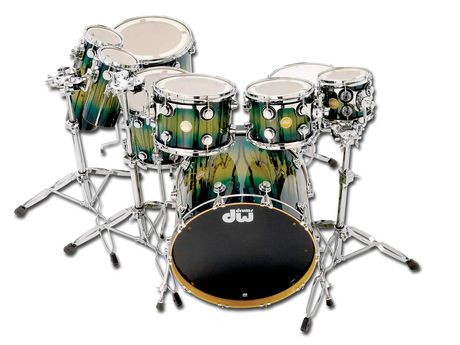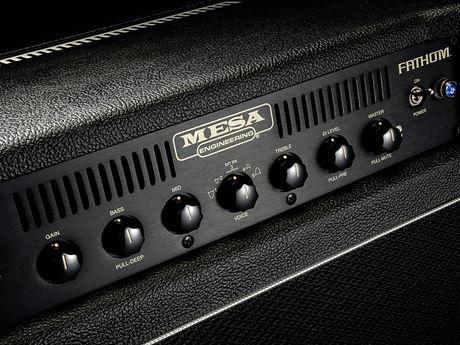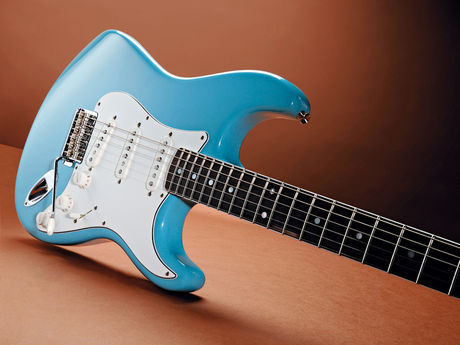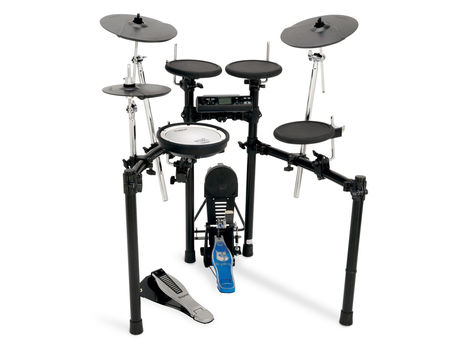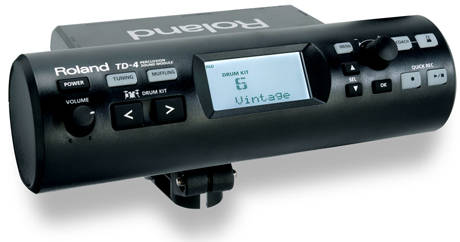STEVE APPLEFORDPosted Apr 16, 2009 12:31 PM

Some things can be counted on at a Slayer recording session. "Can I interest you in something fast and aggressive?" asks producer Greg Fidelman. He's sitting beside guitarist Kerry King at the Pass Studios in Los Angeles, where Slayer are working on a still-untitled album planned for a summer release, and cues up a new metal track with the working title "Build Up." King is ready to thrash.
He's already tapped the Jägermeister machine upstairs, and is now bent over a custom camouflage guitar, his black combat boots on the hardwood floor in the studio control room. King is plugged simultaneously into four amps, each one given a name: The Beast, Hot Ticket Deux, BLS and GF11. Fidelman rolls "Build Up," and King begins overdubbing bits and pieces of intricate metal melody and a harsh, aggressive riff, his eyes closed, nodding to the intense recorded beats of drummer Dave Lombardo. King's strumming hand is a blur, like a wasp in flight.
"Man, I don't even remember it being that fast," King says with a laugh after one take. "We're fucking flying!"
A pair of candles burn nearby, and a large chart lists the songs in progress, most with descriptive working titles, including "7 String," "Drop B" and "Industrial," along with "Psychopathy Red," recorded last October and already leaked online. Slayer are still in the early stages of recording, just five weeks in, working out ideas for what will be an 11-song album, released in July, in time for the summer's second Mayhem Festival tour with Marilyn Manson. Lyrics still wait to be written. Rick Rubin, who produced the band's landmark 1986 album Reign in Blood, is executive producing.
"Why do I write this shit at my age? It's fucking brutal," says King, 44, his head shaved and tattooed. "It's exciting to be part of it and I'm excited to be writing this heavy fucking shit. It's still in the blood."
During this night's session, some friends arrive for a visit. One of them is Rita Haney, wife of the late "Dimebag" Darrell Abbott, and she's brought one of the Pantera veteran's old guitars. It's a blue V-shaped electric from the early-'80s, and she's hoping King will give it a try. "That was his holy grail," she says, handing it to King's guitar tech. She notices a snapshot taped to the Beast of King boozing it up with Darrell and Ozzy guitarist Zakk Wylde. "Ah, the triple threat."
Slayer have survived nearly 30 years since forming in Orange County in 1981, creating the metal-punk collision known as thrash in league with Metallica and other malcontents, inspired by the likes of Judas Priest and Iron Maiden. The band's 2009 album will be Slayer's second with the original lineup since Lombardo returned in 2002, a full decade after his acrimonious break from the band.
"Dave needed to be away from us, and we needed to be away from him," says King now. "He's played with some musicians, not just dumb-ass thrash guitar players. That only makes us better when we apply thrash, and he applies his drums to what we're doing. He's had 12 years of different schooling that he may never have gotten. When he came back, we were all grown up now, and nobody had problems or issues. It was cool."
The process of making Slayer records hadn't changed much in Lombardo's absence. "We're trying to capture our live sound, and I play fucking loud," says King, whose favorite subjects remain bleak themes of insanity, death and "religion-bashing, making people think for themselves." A prime example was 2001's God Hates Us All, a title King now has tattooed in huge Gothic letters along his left arm.
Rush-hour traffic is enough to fuel the rage. "All I need is a day in public and I'm tired of people," King says of his typical lyric-writing inspirations. "People need a lot guidance, and there's not a lot of guidance out there, so there's a lot of situations that are very maddening to me."
At home between tours and recording sessions, King spends his free hours watching football, raising Carpet Python snakes and checking out new metal bands. He's a fan of Marilyn Manson and expects to share a few glasses on absinthe on the road with the shock-rocker this summer, as both acts induct another generation of fresh new metal fans.
"In the last 10 years, we've had girls in the pit, throwin' with dudes and holding their own every step in the way," says King. "It used to be girls were girls, and they might show up with their boyfriends. Now girls are fuckin' into it. And they let you know."
Heavy metal parents also bring the kids. "You'd be surprised how many fucking diapers I've signed," says King.
Singer Tom Araya credits Slayer's longevity to a core mission based not just on speed but on a persona that's darker and heavier than the rest, despite such signs of mainstream acceptance as Grammy nominations and awards. "I credit that to kids discovering Slayer in junior high school," says Araya, at the studio in a black corduroy hoodie, strands of gray in his goatee. "Or the friend hanging out with his buddy who's listening to something he thinks is heavy. And he goes, 'Ha! Heavy?' It's like the Twilight Zone movie: You want to hear something really heavy? Listen to this."
Outside the door of the Slayer sessions is a sign, lifted from some local club: "Absolutely no ins or outs — two drink minimum." Earlier, Araya was wailing and raging some vocal melody ideas for one of guitarist Jeff Hanneman's tunes, but right now the focus is building up King's 2:51 minutes of thrash and burn.
The speed of the tune is almost too much in places, and King rips through a few takes before he's satisfied. But he gets there quickly enough, finishing initial overdubs for three songs in just one session. He then hands the camouflage guitar to his tech, whose eyes grow wider as he says, probably not for the first time, "The strings are hot!"
courtesy: rollingstone

